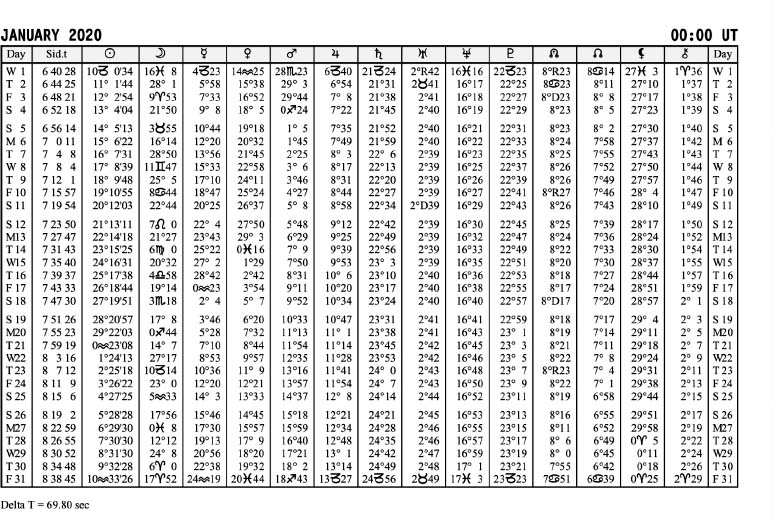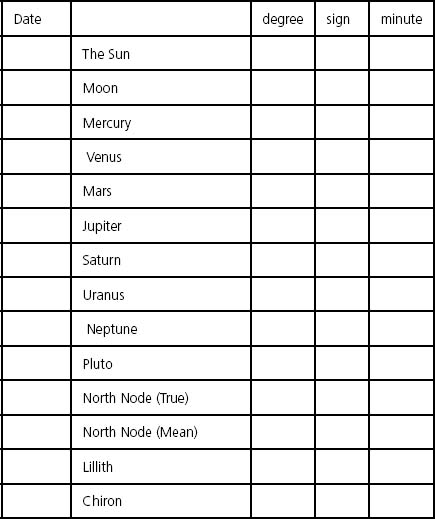
Whenever I whip out my ephemeris, people are always blown away. “How on earth do you even begin to read that?”
It sure makes me look like a smarty-pants to the uninitiated, but here's the truth: it's not that hard! You've already got the symbols down. It's just a matter of looking at them and reading left to right and top to bottom. Plus a few other things.
An ephemeris is a table that shows where the planets were on a particular date. You've got a couple of options to choose from: you can buy a print version or find a digital version online. I'm old skool, so I prefer to hold one in my hands, thank you very much. I have two: one for the years 1900–2000 and another one with dates from 2000–2050 so I can look at current transits and construct charts for people born after 1999.
Let's look at the ephemeris for January 2020, shown on page 88. The time is set at midnight in Greenwich, England (that's why you see the numbers 00:00 UT, which means zero hour and minutes, Universal Time). For Greenwich Mean Time, you need to adjust for your time zone (which may also mean adjusting for Daylight Saving Time in some cases). For example, I'm in the Central Time Zone, so I would subtract five hours from the time given.
If you look across the top of the chart, you'll notice vertical columns start with the day of the month. The second column marks the Sidereal Time, but that isn't necessary unless you're trying to calculate charts by hand—and with astrology software, you don't need to! Yay! The next column is the Sun, followed by the other planets, including the nodes and Lilith (not every ephemeris will have Lilith).
Find the column with the symbol of the Sun. Scroll down, and you'll see the symbol for Capricorn at the beginning or on the first of the month. The number in front of the Capricorn symbol is the degree, and the numbers after the symbol reflect the time.
As you scroll down this column, you will see the planet changes to Aquarius on the twenty-first. Follow the same drill for each planet. That's all there is to it!
If you see an “R” symbol, that means the planet is retrograde (more on that later). A “D” means the planet is direct, or no longer retrograde.
Let's work through an example. To check the astro-action for January 13, here's what we find:
The Sun 10° Capricorn 14
Moon 21° Leo 27
Mercury 23° Capricorn 43
Venus 29° Aquarius 3
Mars 6° Sagittarius 29
Jupiter 9° Capricorn 25
Saturn 22° Capricorn 49
Uranus 2° Taurus 39
Neptune 22° Pisces 32
Pluto 22° Capricorn 47
North Node (True) retrograde 8° Cancer 24
North Node (Mean) 7° Cancer 36
Lilith 28° Pisces 24
Chiron in 1° Aries 52
Not too hard, eh?
Your turn! Pick a date from the sample ephemeris and then list the degrees, signs, and minutes.

You rock!